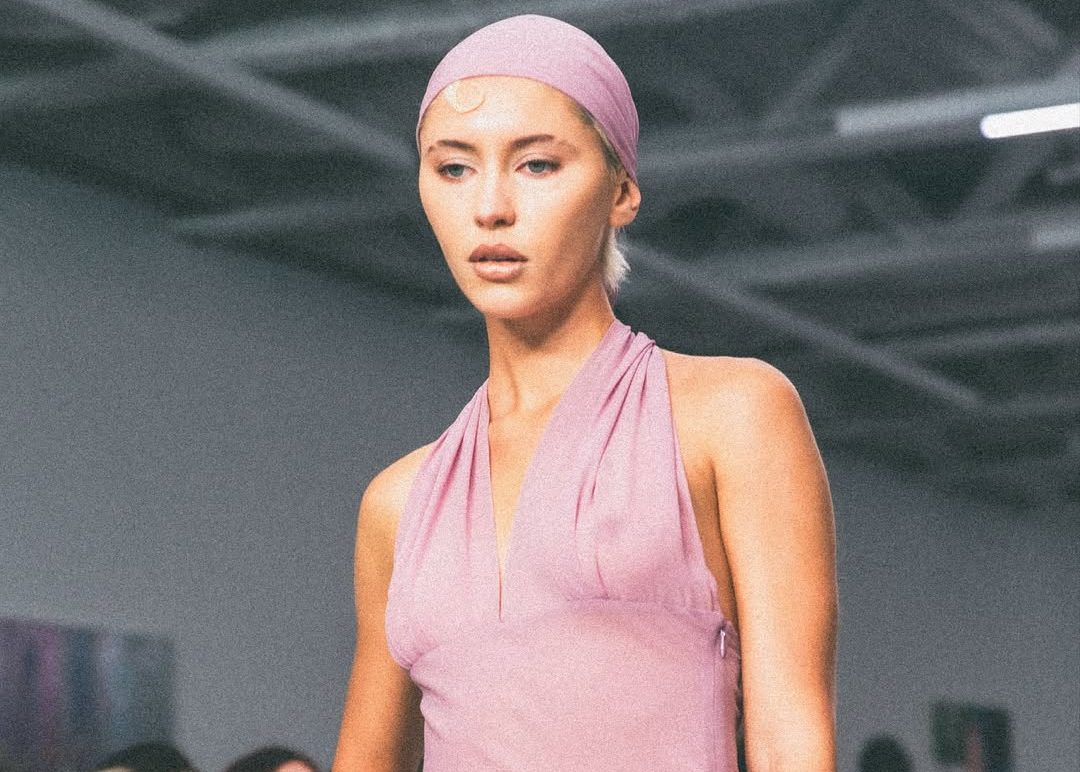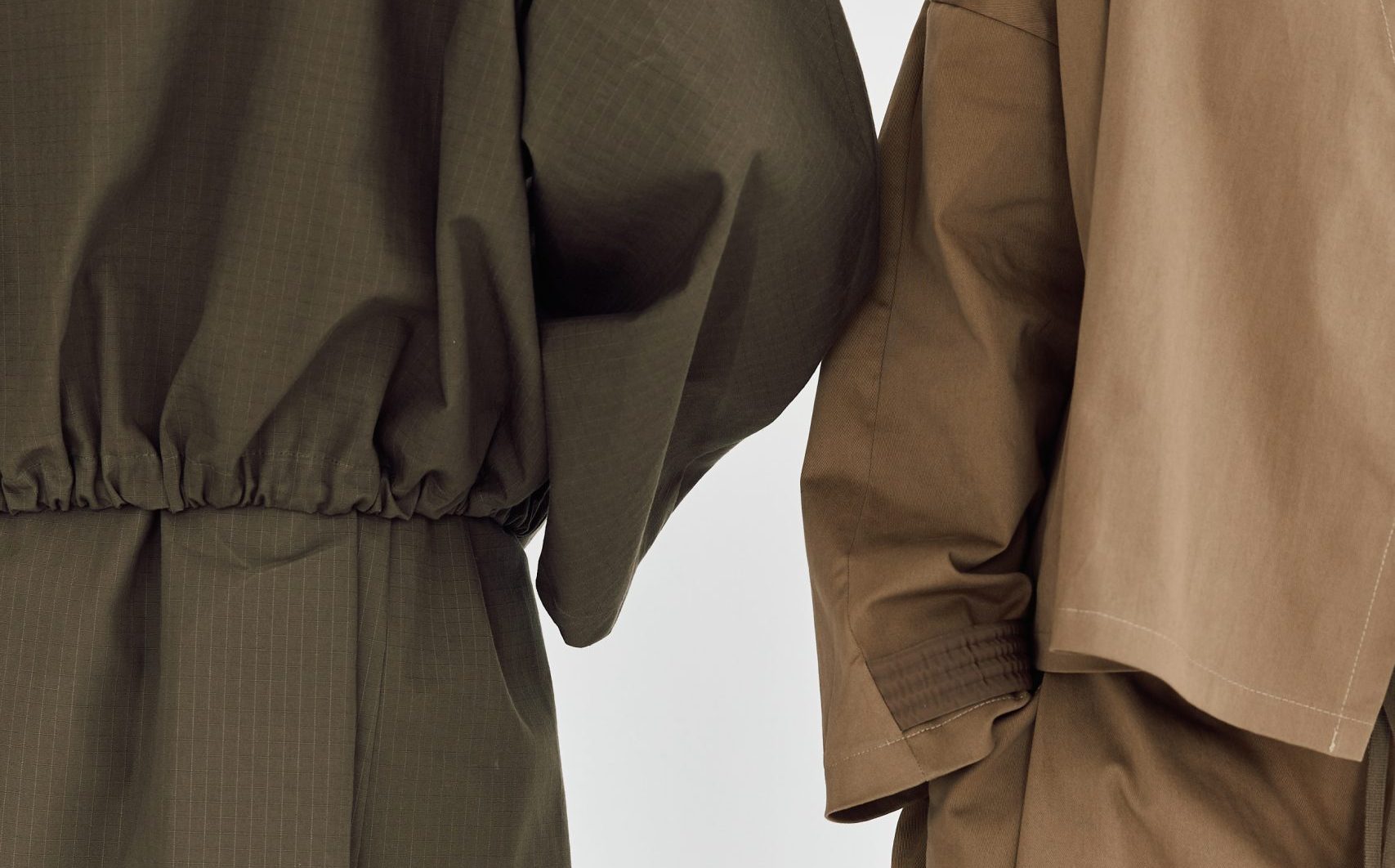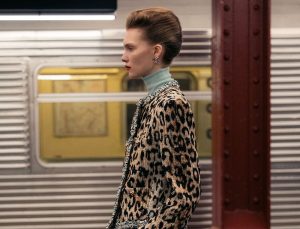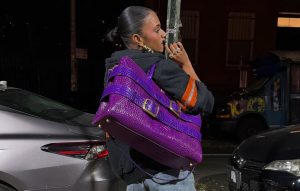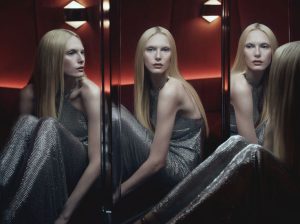In London, fashion is never just about trends. Once again, this season, the runways became stages for storytelling. A look back at five singular visions.
Conner Ives: When pop culture meets upcycling (magazine-style, direct)
First revealed when he dressed Adwoa Aboah for the Met Gala while still a student, Conner Ives is steadily carving out his place in the fashion world. This season, the London-based American designer unveiled a collection titled On Pop, accompanied by the slogan: “Pop music will never be lowbrow.”
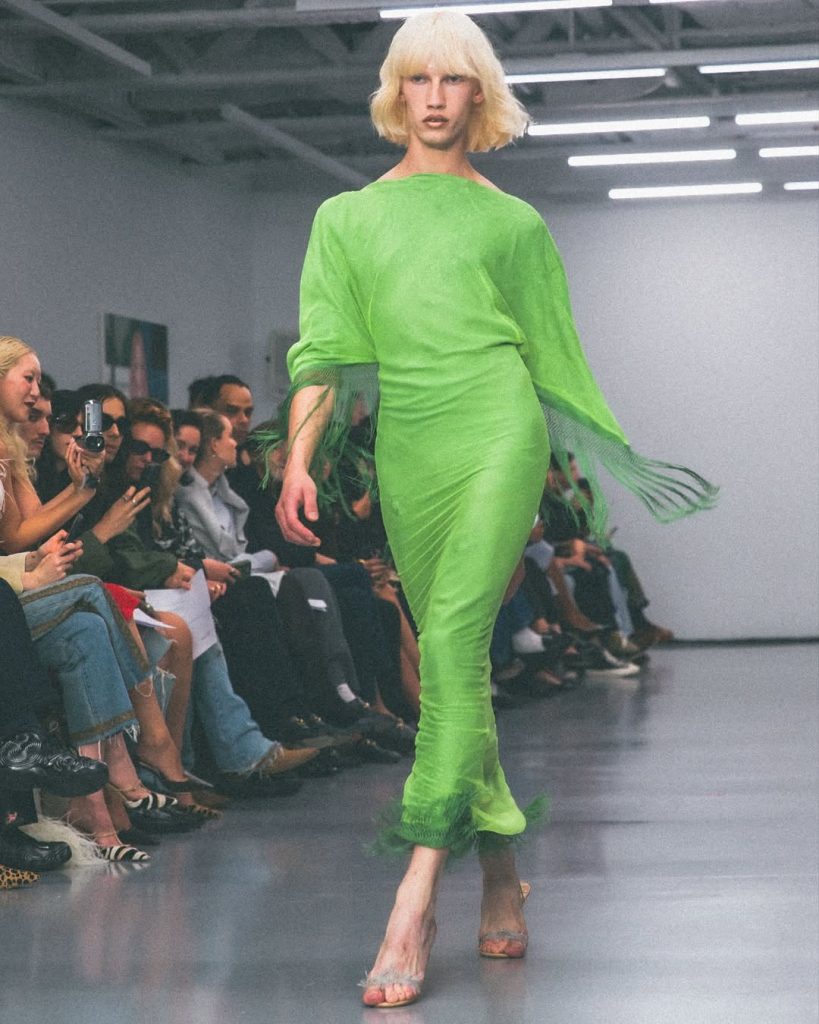
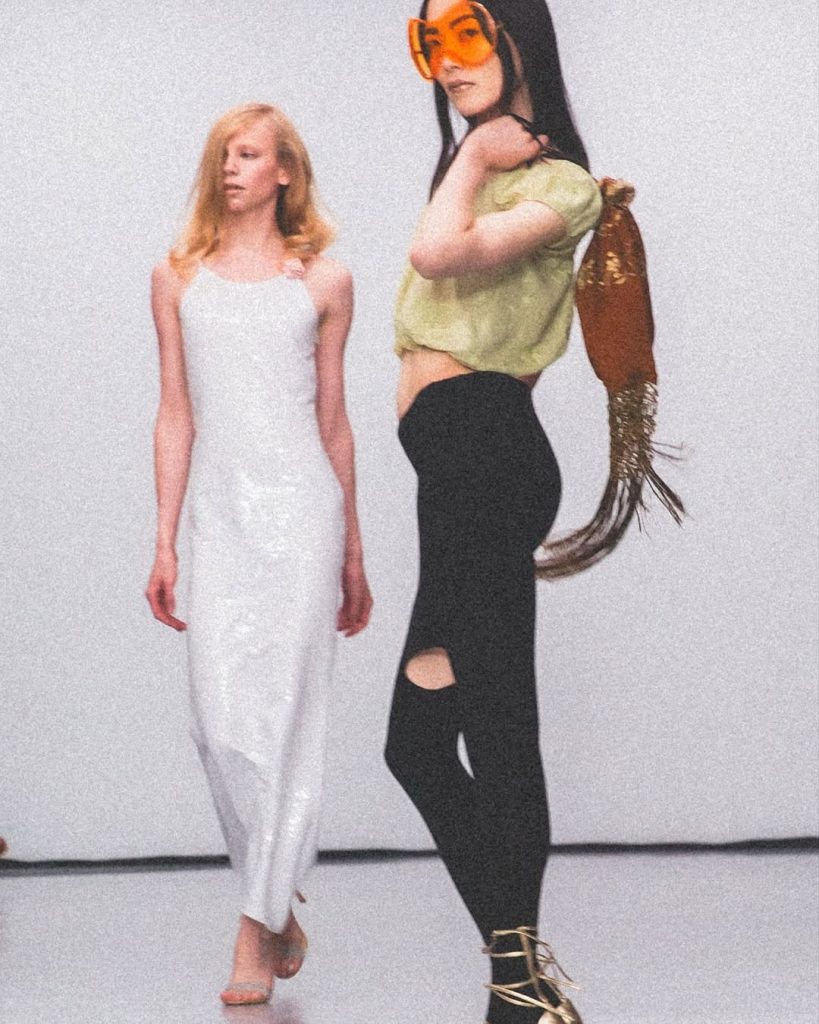
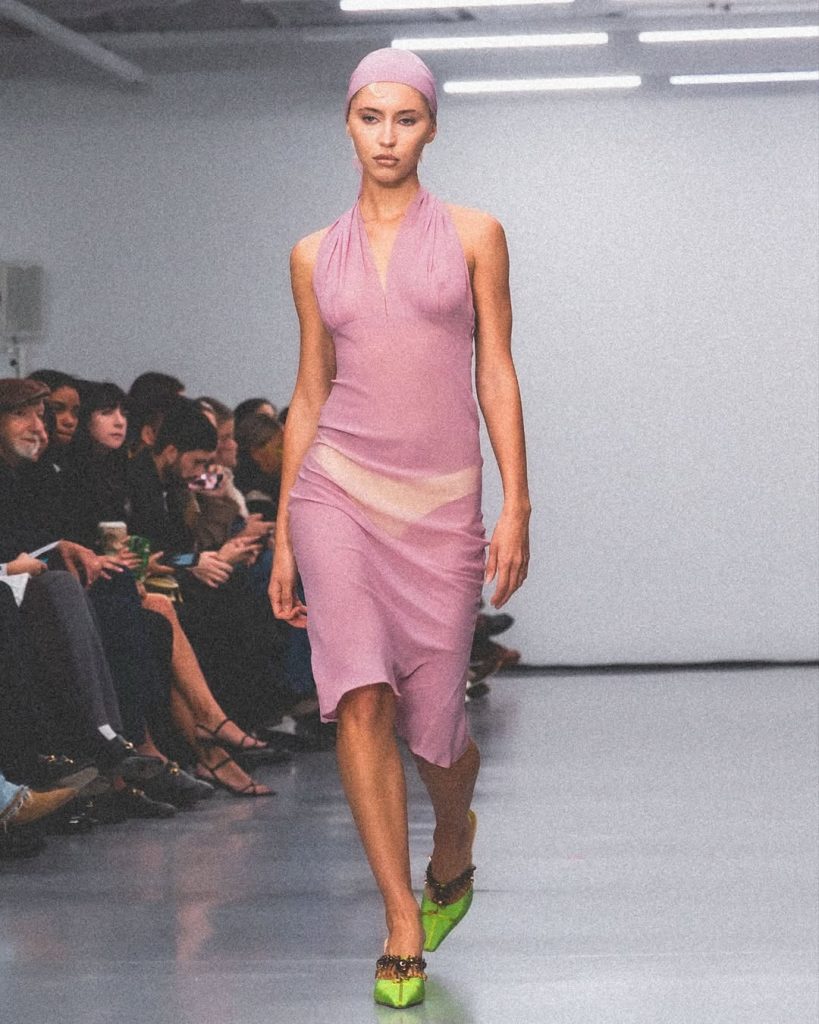
A vibrant tribute to pop culture and ’80s icons. On the runway, flashy shades: apple green, fuchsia, neon orange were paired with sculpting tights, oversized sunglasses, sarong-style fringes, and fish-scale effect dresses. True to his eco-conscious ethos, Ives once again placed upcycling at the heart of his creative process.
For the finale, all the models including Iris Law and Osman Ahmed joined the designer, who appeared in a Lady Gaga T-shirt. Who else but the queen of pop herself?
The finale brought together all his models, including Iris Law and Osman Ahmed, around the designer, who wore a T-shirt emblazoned with Lady Gaga. None other than the queen of pop.
Ashley Williams and the rise of Provincial chic
At Ashley Williams, the mood was set straight from the show notes: “What if hometown provincials deserve fashion too?” The designer takes us on a journey into a shared memory that of a childhood spent in the provinces.
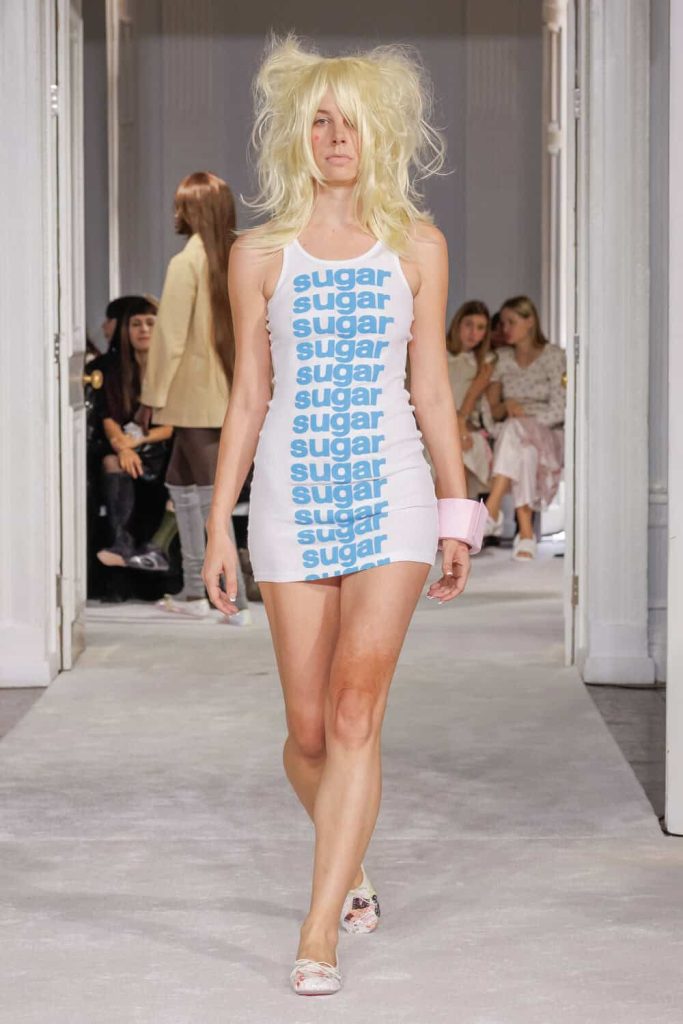
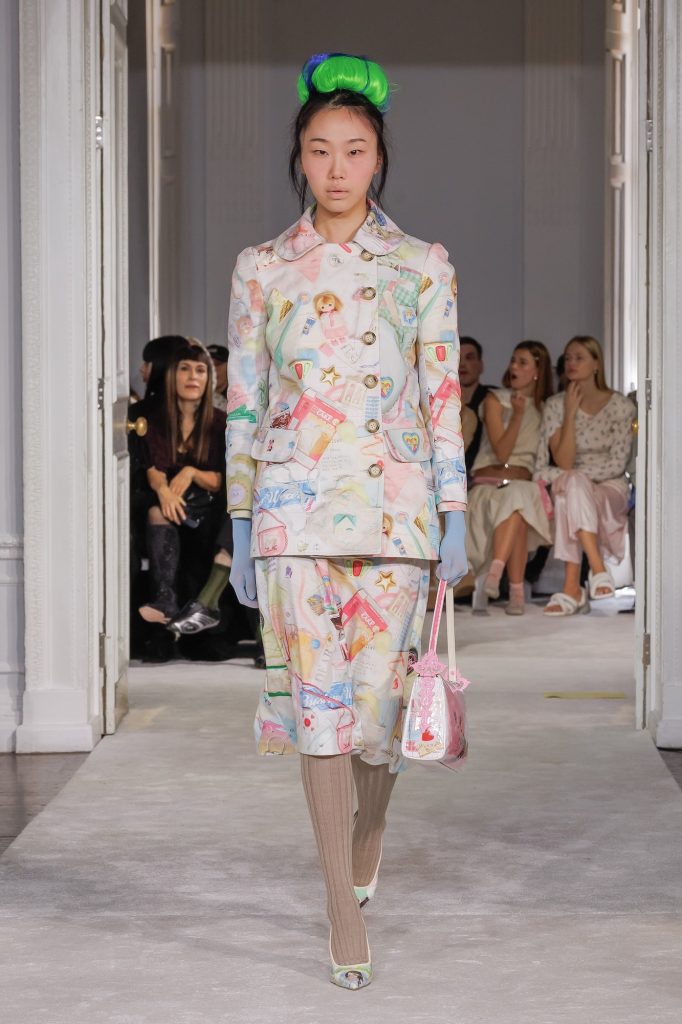
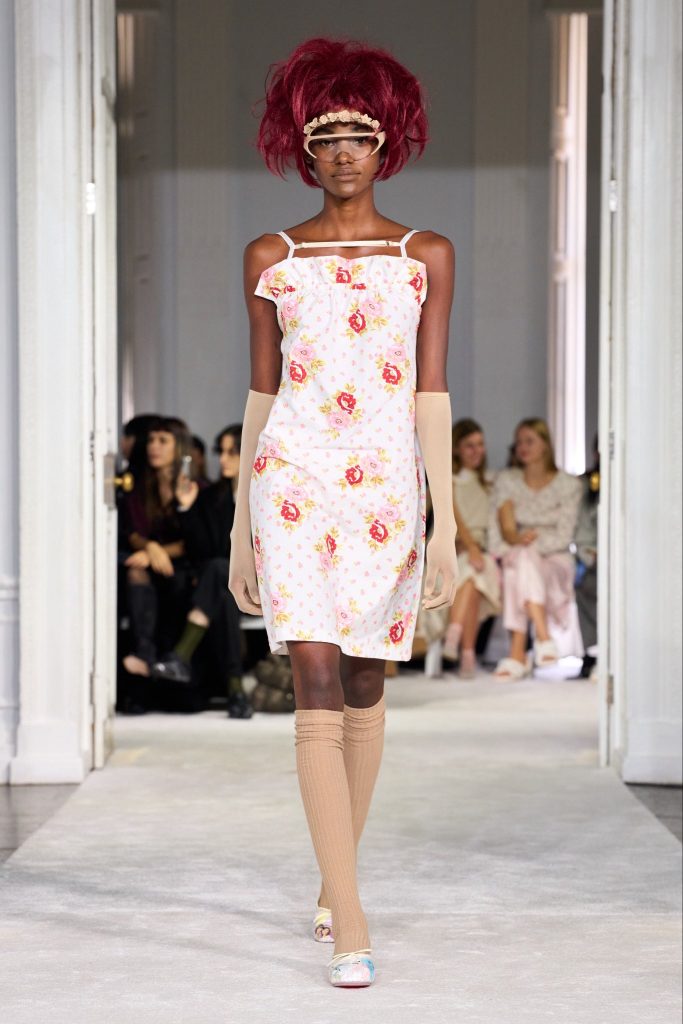
The collection draws on the codes of grandma’s wardrobe: floral blouses, orthopedic shoes reimagined as hybrid ugly heels, frilled nightdresses… Everything feels rooted in a familiar past, refracted through a maximalist and kitsch lens. Playful subversions abound: toilet rolls worn as oversized bracelets, shoe straps turned into belts, teased grey wigs, and plasters on the knees to complete the look.
Layered onto this was a childlike universe: a cat in a basket printed over a bodysuit, tiny picture frames tucked into pockets, and megalomaniac slogans like “I Love Me.” A collaboration with jewelry brand Yvmin looks set to further extend this joyfully kitsch DNA.
Ashish: dance, glitter and protest
Ashish has never hidden his taste for activism. At the previous, unofficial London Fashion Week, the designer turned a Monday morning into a full-blown political event. This season, he brought his message to a more official stage.
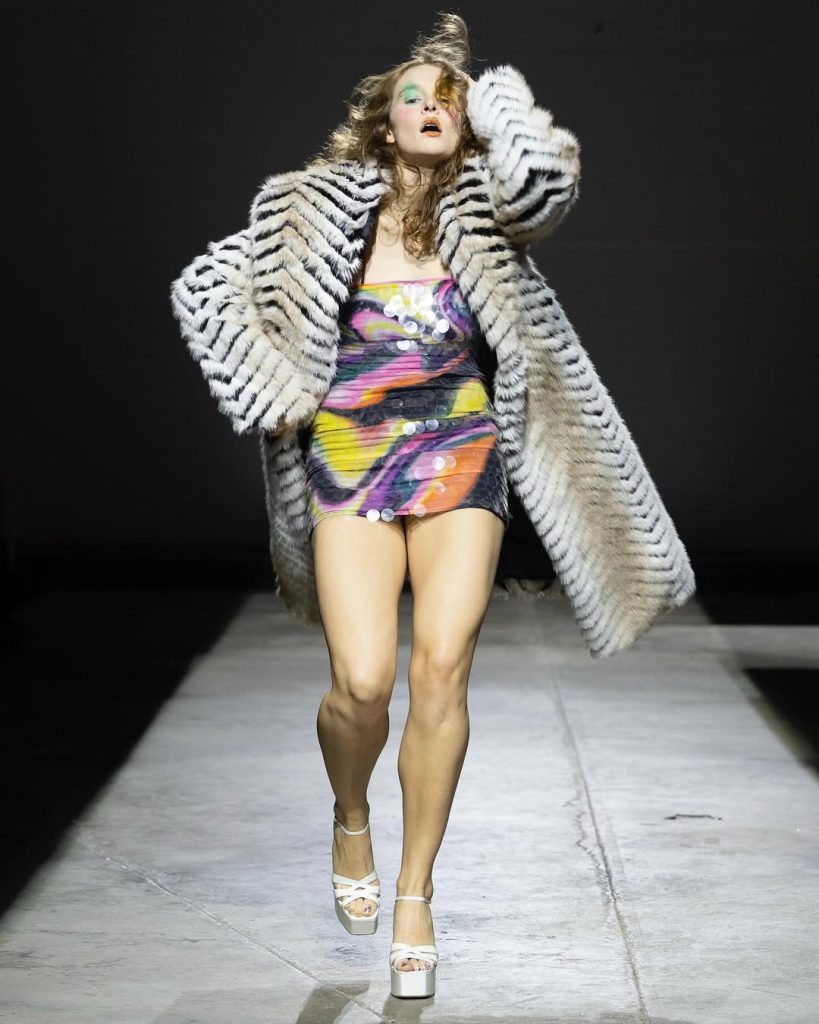
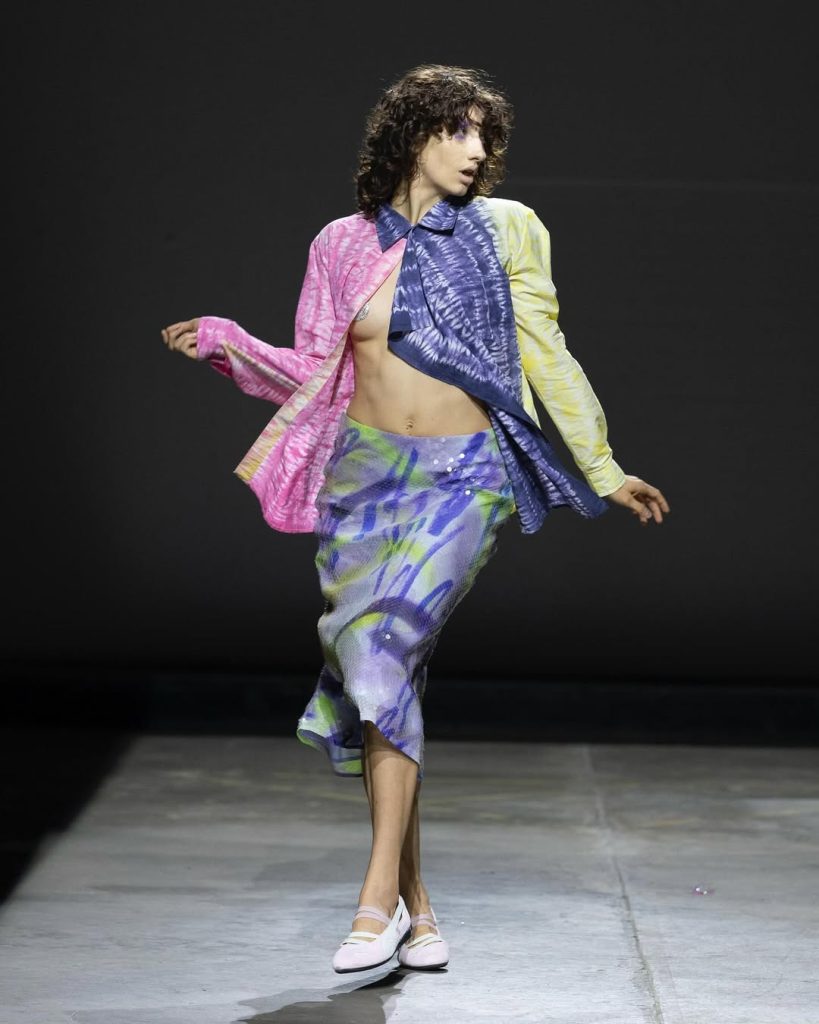
On a square runway, models gave way to dancers, who animated the clothes through movement rather than walking. A reminder that clothing is not a constraint but an extension of the body.
The collection stayed true to the house’s aesthetic: bold colors, glitter in abundance, sequins, ruffles, and biting slogan T-shirts reading “Wow, what a shit show” and “Not in the mood.” A burst of joy infused with protest, proving that fashion can be both a spectacle and a platform.
Simone Rocha: Between innocence and metamorphosis
At Simone Rocha, the show explored a delicate in-between the passage from adolescence to adulthood. Inspired by society rallies, those high-society balls where young women make their debut, the designer imagined a heroine marked at first by awkwardness: slipping straps, a cushion clutched to the chest, flowers trapped in fabric or printed directly onto garments.
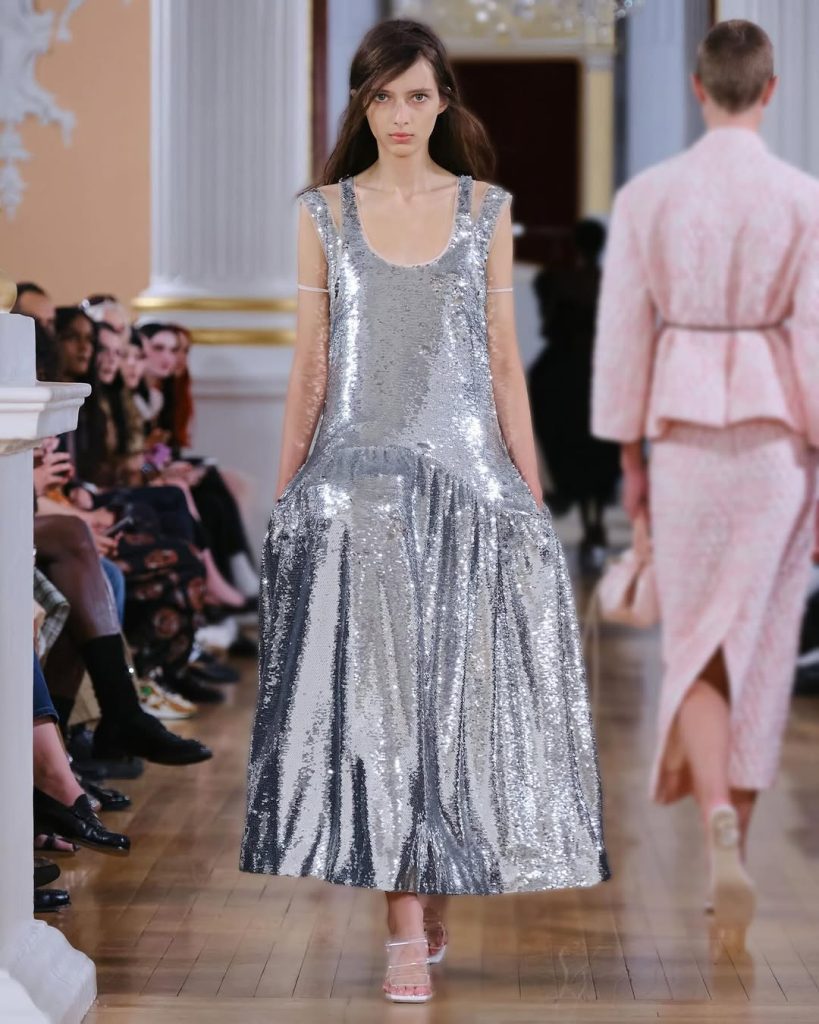
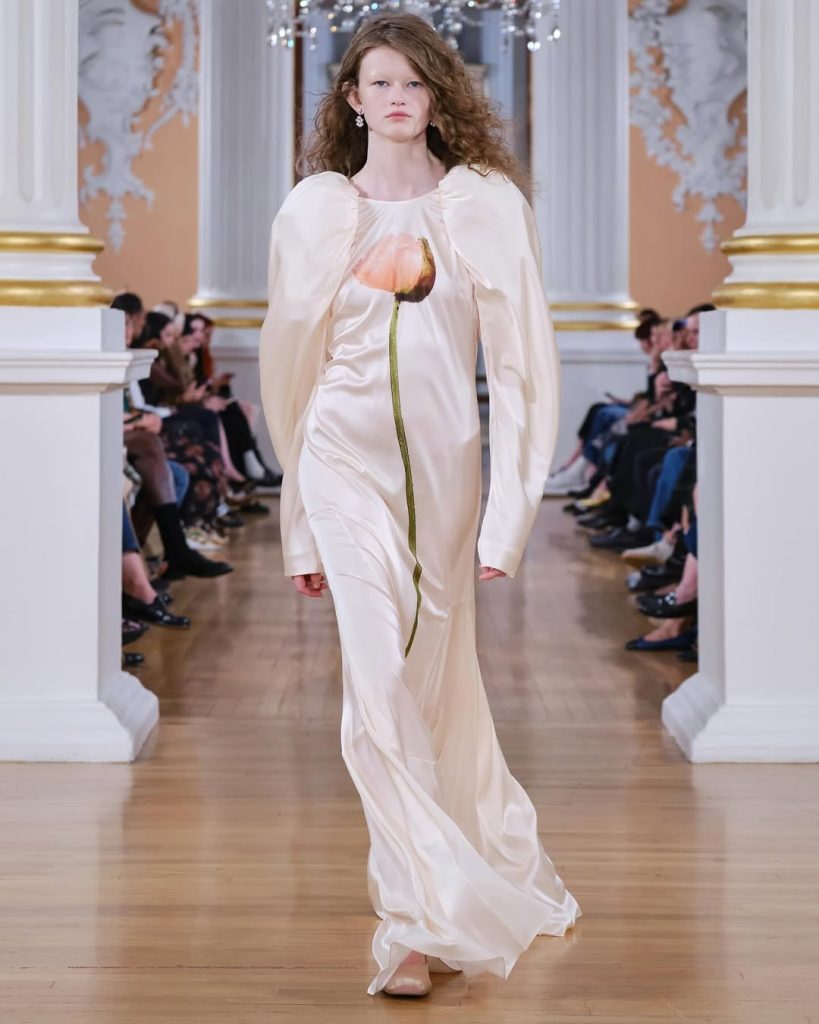
Before broadening at the shoulders, the silhouettes swelled with volume, often thanks to crinolines deliberately revealed through sheer fabrics. This migration from hips to shoulders symbolized growth and assertion. The palette combined Rocha’s signature black, red, and pink with touches of green, a nod to blossoming. As for accessories: crowns, sequined gloves, discreet bows, and jewel-like shoes completed this modern fairytale.
Dilara Findikoglu: A new armor
A graduate of Central Saint Martins, Dilara Findikoglu unveiled “Cage of Innocence”. This series of hybrid portraits, at the crossroads of eras and genders, underscores that despite physical, mental, and social constraints, women have always found the strength to fight.
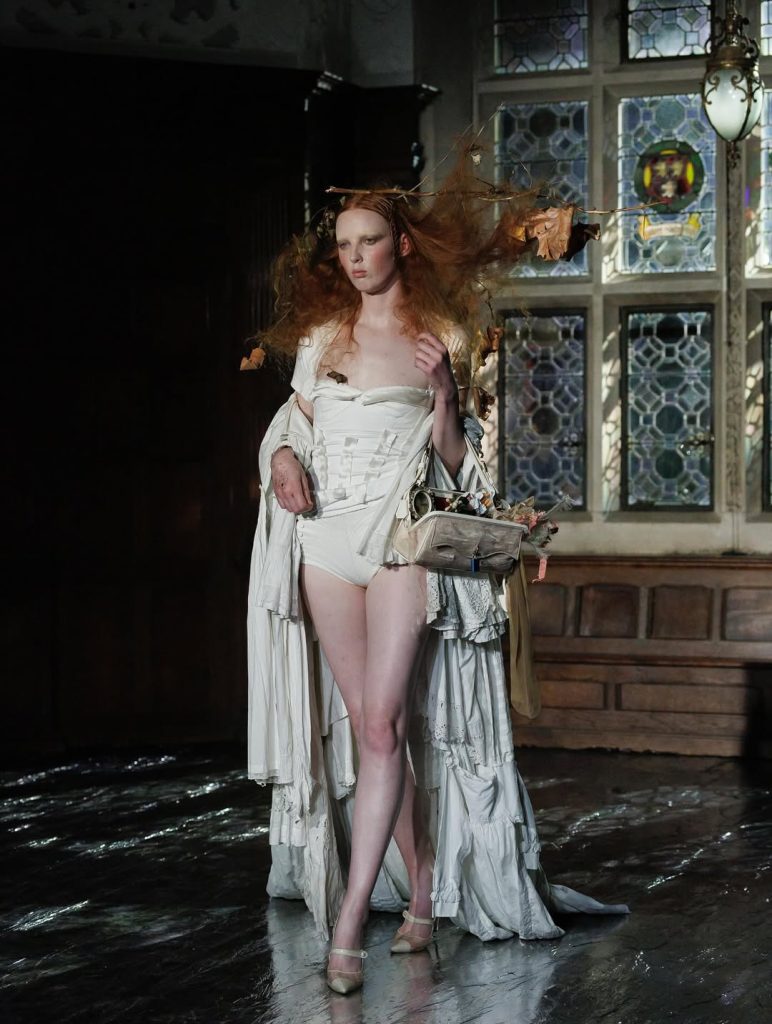
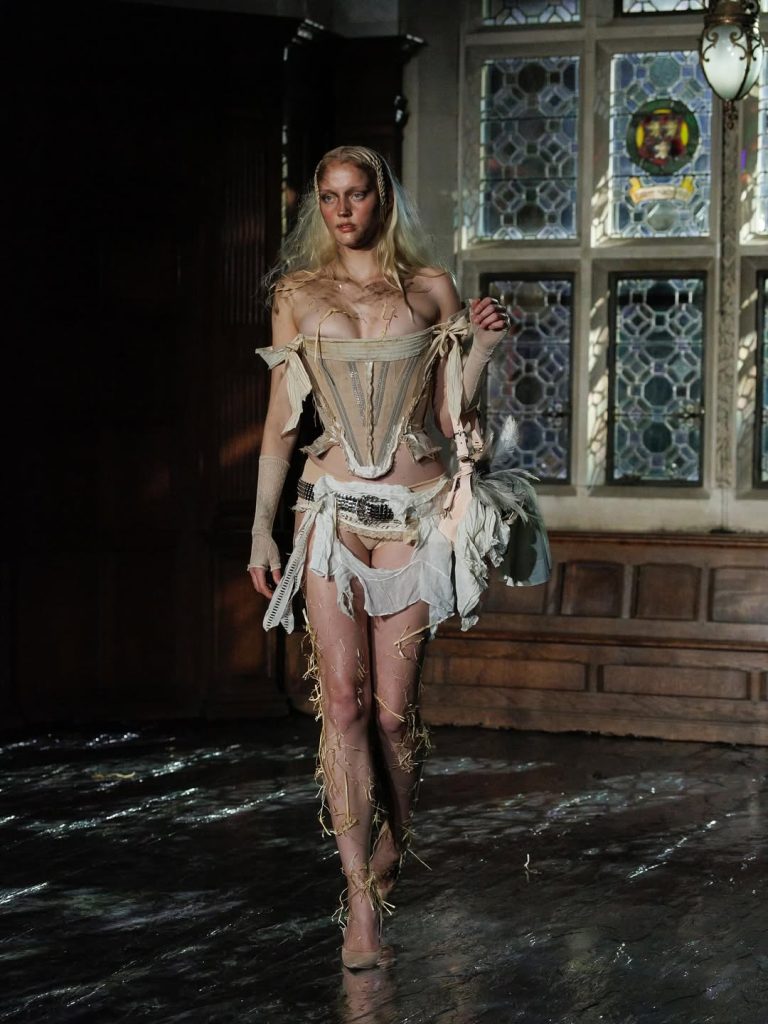
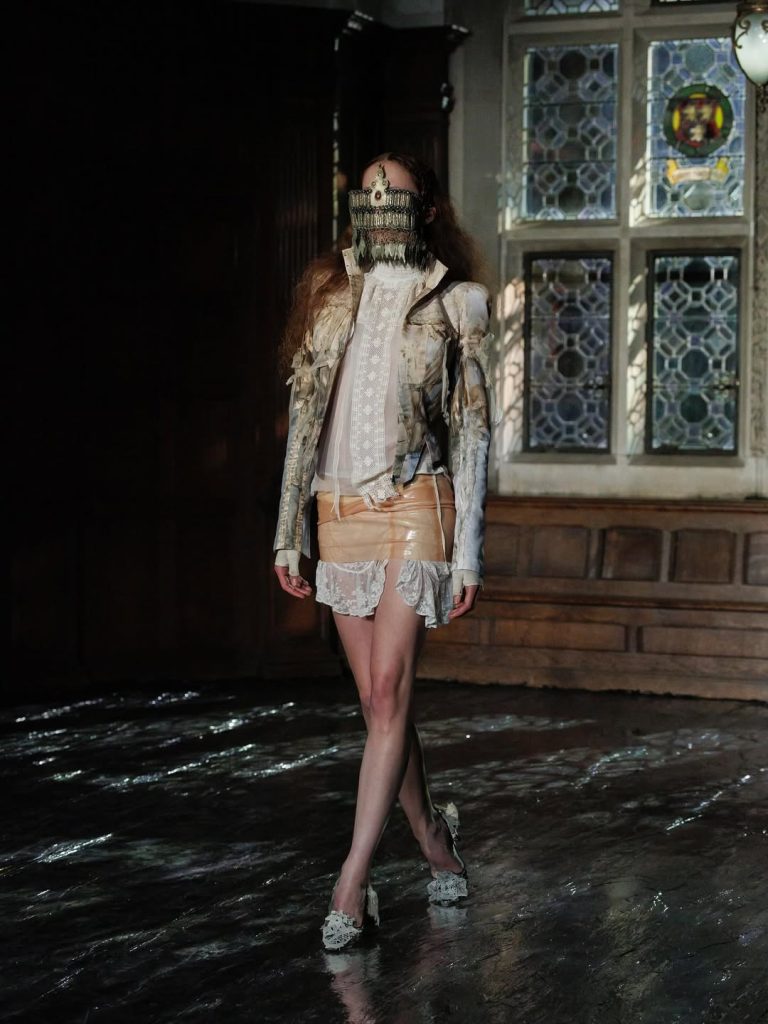
The corset, long a symbol of oppression was omnipresent, yet counterbalanced by a set of metallic accessories evoking chainmail, suggesting not submission but readiness for battle.
Straddling gothic and Victorian influences, the collection nevertheless takes a more commercial turn, moving away from black in favor of a palette of reds, whites, and beiges. While the aesthetic remains radical, it becomes more accessible, without relinquishing any of its symbolic weight.
Article by Julie Boone.


